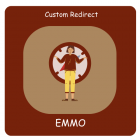Fixing Magento 2 ReflectionException Errors on Product Pages

Fixing Magento 2 ReflectionException Errors on Product Pages
You're working in your Magento 2 admin panel and suddenly hit an error: "Exception #0 (ReflectionException): Class does not exist" when trying to access a product page. This error blocks you from editing or creating products and stops your workflow completely.
Table Of Content
What Causes This Error
The error means Magento can't find a class file it's looking for. This happens when:
- A module was deleted but left behind database references
- The module's namespace changed after refactoring
- Custom code was removed without proper cleanup
- A third-party extension was uninstalled incorrectly
- Deployment processes failed to upload all files
The class path in the error message points directly to the source of the problem. Save this path because you'll need it for the fix.
Tip
To enhance your eCommerce store’s performance with Magento, focus on optimizing site speed by utilizing Emmo themes and extensions. These tools are designed for efficiency, ensuring your website loads quickly and provides a smooth user experience. Start leveraging Emmo's powerful solutions today to boost customer satisfaction and drive sales!
Why Product Attributes Trigger This
Product attributes created through code often use custom classes to populate dropdown options. These source model classes control what values appear in attribute dropdowns like brand names, material types, or custom categories.
When you delete or modify a module that created these attributes, the database still references the missing class. Magento tries to load it when displaying the product page and fails immediately.
Only code-generated attributes with custom source models cause this specific error. Standard attributes configured through the admin panel work fine because they don't depend on external classes.
Common Scenarios:
- Removed a brand management module but kept the brand attribute
- Deleted custom attribute extensions after migrating data
- Updated modules that changed their namespace structure
- Deployed code without running proper database cleanup
How to Fix the Error
You need to remove the orphaned attribute reference from the database. This doesn't delete product data, just the broken attribute definition.
Before You Start:
- Backup your database
- Note the exact class path from your error message
- Ensure you have database access credentials
Steps:
- Access your database (use phpMyAdmin, MySQL Workbench, or command line)
- Open the eav_attribute table
- Find rows where source_model contains the missing class path
- Verify these are the attributes causing issues
- Delete those rows
SQL Method:
First, check what you're deleting:
SELECT attribute_id, attribute_code, source_model
FROM eav_attribute
WHERE source_model LIKE '%YourModuleName%';
This shows all attributes linked to your missing module. Review the attribute_code column to identify which product attributes will be removed.
After confirming:
DELETE FROM eav_attribute
WHERE source_model = 'Your\\Exact\\Missing\\Class\\Path';
For multiple broken attributes from the same module:
DELETE FROM eav_attribute
WHERE source_model LIKE '%YourModuleName%';
Alternative Admin Panel Method:
If you can still access some admin areas:
- Navigate to Stores > Attributes > Product
- Search for attributes created by the problematic module
- Delete each attribute manually
- Clear cache: bin/magento cache:clean
Reload your product page. The error should be gone.
Understanding ReflectionException in Magento 2
| Issue Type | Description | Common Causes | Impact Level |
|---|---|---|---|
| Missing Classes | Files deleted but still referenced in code or database | Incomplete module removal, failed deployments | High - blocks pages |
| Autoload Failures | Class files exist but can't be loaded properly | Corrupted composer files, incorrect file permissions | Medium - intermittent errors |
| Namespace Errors | Incorrect class paths or renamed modules | Module updates, manual code changes | High - consistent failures |
| Access Issues | Private or protected classes called incorrectly | Poor coding practices, API changes | Medium - feature-specific |
| Constructor Issues | Class dependencies can't be resolved | Missing module dependencies, circular references | High - system-wide problems |
ReflectionException occurs when Magento can't inspect class structures at runtime. The framework uses PHP's reflection API to dynamically analyze classes, methods, and properties. This powers dependency injection, plugin systems, and dynamic class generation.
When reflection fails, Magento can't:
- Instantiate classes through the object manager
- Process constructor dependencies
- Apply plugins and interceptors
- Generate factory and proxy classes
- Validate class structures
These errors break functionality and can crash entire pages or admin sections. Fix them by checking class names, verifying file locations, ensuring proper autoloading, and cleaning database references.
Debugging Steps:
- Check if the class file physically exists in your codebase
- Verify the namespace matches the directory structure
- Run
bin/magento setup:di:compileto regenerate dependency injection - Check
var/log/system.log and var/log/exception.logfor detailed traces - Enable developer mode:
bin/magento deploy:mode:set developer
Related Database Tables to Check
The eav_attribute table isn't the only place that stores attribute references. Check these tables if problems persist:
| Table Name | What It Stores | When to Check |
|---|---|---|
| eav_attribute | Core attribute definitions | Always check first |
| catalog_eav_attribute | Product-specific attribute settings | For catalog-related errors |
| eav_entity_attribute | Attribute set assignments | If errors appear on specific attribute sets |
| eav_attribute_option | Dropdown option values | For option-related problems |
Query each table:
SELECT * FROM catalog_eav_attribute
WHERE attribute_id IN (
SELECT attribute_id FROM eav_attribute
WHERE source_model LIKE '%YourModuleName%'
);
Clean up related records before deleting from eav_attribute to maintain database integrity.
Prevention Tips
Write uninstall scripts for custom modules. These scripts should:
- Remove custom attributes programmatically
- Clean up database entries across all related tables
- Delete configuration values from
core_config_data - Clear dependency references in
setup_moduletable - Remove attribute options and values
- Clear cached data
Example Uninstall Script Structure:
// In Setup/Uninstall.php
public function uninstall(SchemaSetupInterface $setup, ModuleContextInterface $context)
{
$setup->startSetup();
// Remove attributes
$eavSetup = $this->eavSetupFactory->create(['setup' => $setup]);
$eavSetup->removeAttribute(\Magento\Catalog\Model\Product::ENTITY, 'your_attribute_code');
// Clean configuration
$this->configResource->deleteConfig('your_module/section/path');
$setup->endSetup();
}
Test module removal in staging environments before production. Check these areas after uninstalling:
- Product edit pages
- Product listing grids
- Frontend product pages
- Category pages
- Layered navigation
- Search results
Document custom attributes your modules create. Include:
- Class paths and namespaces
- Database tables affected
- Dependencies on other modules
- Configuration paths used
- Attribute codes created
Conclusion
You now have a functional custom shipping method in Magento 2. You can extend this foundation by adding conditional logic, integrating with external APIs for real-time rates, or implementing complex calculation rules based on your business needs.
FAQs
What is a ReflectionException error in Magento 2?
A ReflectionException in Magento 2 occurs when the system cannot instantiate a class, usually due to missing files, incorrect namespaces, or misconfigured dependencies. On product pages, this can prevent products from loading properly.
Why do ReflectionException errors appear on product pages?
These errors often appear due to missing or renamed classes, incomplete module installations, wrong di.xml configurations, or third-party module conflicts that affect product page rendering.
How can I identify the cause of a ReflectionException?
Check the exact error message in var/log/exception.log or var/log/system.log. The error usually specifies the missing class or interface, which helps pinpoint whether it’s a module issue, typo, or dependency problem.
How do I fix a missing class or interface error?
Ensure the referenced class exists in the correct namespace. If it belongs to a third-party module, verify the module is installed and enabled. Run bin/magento setup:di:compile after correcting the class to regenerate the dependency injection cache.
What role does di.xml play in ReflectionException errors?
di.xml defines dependency injection in Magento 2. Incorrect preferences, missing type hints, or invalid class references in di.xml can cause ReflectionException errors when Magento tries to instantiate objects.
Can a disabled module trigger ReflectionException errors?
Yes. If a module that defines a class or interface is disabled, any reference to that class elsewhere will fail, causing a ReflectionException. Check module status using bin/magento module:status and enable necessary modules.
How do I resolve third-party module conflicts?
Temporarily disable modules one by one and test product pages to isolate the conflict. Once identified, check for updates from the module provider, fix the class references, or adjust di.xml to resolve dependency issues.
Does clearing Magento cache help with ReflectionException errors?
Yes. After fixing class references or DI issues, run bin/magento cache:flush and bin/magento setup:di:compile to ensure Magento rebuilds caches and regenerated compiled files.
Are ReflectionException errors always caused by code issues?
Mostly yes, but sometimes database issues, missing entries, or corrupted installation files can trigger them. Ensure your modules are installed correctly and the database schema is up to date using bin/magento setup:upgrade.
What are best practices to prevent ReflectionException errors on product pages?
Follow Magento coding standards, validate namespaces and class names, check third-party modules for compatibility, maintain up-to-date DI configurations, and always run setup:di:compile after making changes to ensure smooth instantiation of classes.









